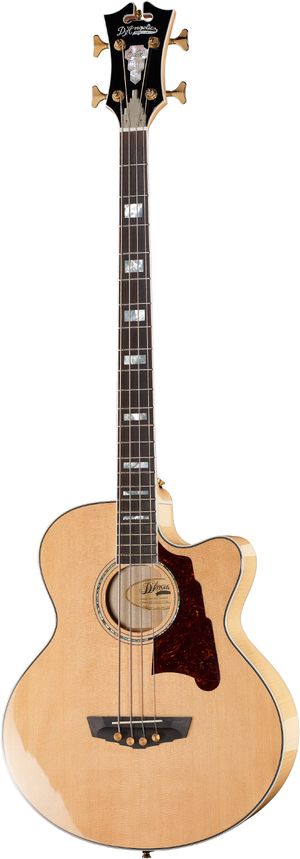2. Acoustic or electric
It began with the double bass

Thomann Rockabilly Flames BKE 3/4
Everybody knows the acoustic bass in its original form of the double bass in an orchestra, which may be played with a bow or finger picked. The double bass (also known as upright bass) is also well established in the world of jazz. Many virtuoso double bass players have forever secured their places in music history, for example Scott LaFaro, Dave Holland, Eddie Gomez, Paul Chambers, and John Patitucci, among others. The double bass was also used extensively in early rock music like Rock'n'Roll and Rockabilly, and is still used in these genres as an authentic stylistic element.
The double bass was developed from the violone of the 16th century, the lowest-sounding member of the viola da gamba family. These early string instruments were developed in parallel to the violin family and the violone is widely regarded as the transitional instrument to the double bass.
The modern orchestral double bass is often up to 1.8 meters tall. It usually has four strings, but five string versions also exist. On some four string models, the range can be extended downwards through the use of a special mechanism (C extension), a mechanical lever which makes the lowest string sound even lower.
The acoustic bass guitar

D'Angelico Mott Acoustic Bass
From a distance, these instruments look like acoustic guitars, but they aren't! Sonically, acoustic bass guitars are characterized by a voluminous tone with a strong acoustic colour, because the vibrations of the strings resonate in the large hollow body of these instruments and reach the listeners' ears through the sound hole.
Due to its limited volume, the acoustic bass guitar is normally only used where it can hold it's own alongside other acoustic instruments. The looks of these instruments often play an important role in the decision to use them. Acoustic bass guitars have seen an increase in popularity sparked by the TV series "MTV Unplugged", which featured live performances with a minimum of amplification.
If acoustic bass guitars are used alongside electrically amplified instruments, they will invariably also have to be amplified sooner or later using a small bass combo amp, a bass rig consisting of an amplifier head and a speaker cabinet or by connecting them directly to the PA system. To achieve this, special pickup systems are used, which ideally preserve the individual acoustic character of the bass. But even alongside an unamplified steel string guitar, the acoustic bass reaches its volume limitations rather quickly. You may well find yourself wanting an amplifier sooner than you think!
The electric bass

Marcus Miller V7 Swamp Ash-4
The electric bass has become the standard in rock and pop music from the second half of the last century. Even jazz players often use electric basses in amplified styles such as jazz rock or fusion.
Everything you've heard about electric guitars regarding the types of wood, construction and electrics, generally also applies to basses. Certain differences exist in the areas of pickups, tuning mechanisms, bridges and electronics, which have been adapted to the larger size of the bass and its sonic characteristics.
Wood is still the most widely used material in electric bass making. In the 1980's, bass makers experimented with alternatives such as carbon fibre and graphite for the body, neck, and fingerboard, but these materials didn't prove to be successful. Some manufacturers (e.g. Marleaux) still use graphite to reinforce the neck.
Like guitars, electric basses are available with solid and hollow bodies. Fully acoustic instruments are charactized by a deeper body, while half acoustic basses have a body thickness of about five centimetres. Many instruments of this type have a so-called sustain block underneath the bridge, which prevents unwanted resonances of the top at higher volumes. This greatly reduces the risk of feedback.
As with guitars, the neck is screwed or glued to the body. There are also necks which extend through the full length of the instrument. In this case, the body is formed by glueing two "wings" to the sides of the neck. You will find more information on this type of bass later in this guide.
The variety of bass styles has been developed in parallel to electric guitars. A number of tried-and-true standard styles were invented by classic manufacturers such as Fender and Gibson, and were late imitated and modified by other companies. The Fender Jazz Bass is a good example of this: It has been copied countless times down to the smallest detail, and several manufacturers have modified it to fit into their range of instruments.
In addition to the established standard styles, which are available in all price ranges, there is also a high-end market dominated by a number of companies specialising in luxurious basses. These instruments are of meticulous quality, but can come with a rather hefty price tag. Again, more on that later.





